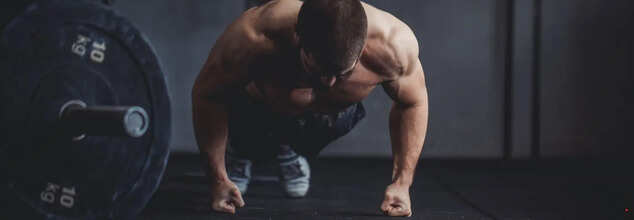
Credit: Canva
World Tuberculosis Day: Can This Condition Spread To Your Breasts?
Tuberculosis (TB) killed 1.25 million people in 2023 alone, as per data from the World Health Organisation (WHO). With rising cases, it has probably returned to being the world’s leading cause of death from a single infectious agent, following three years in which it was replaced by coronavirus disease (COVID-19). While it is known to be a condition impacting the lungs, there are rare cases where it spreads outside the lungs (extrapulmonary TB). One of them is breast Tuberculosis (TB).
What Is Breast TB An How Does It Spread?
The first case of breast TB was recorded by Sir Astley Cooper who described it as "scrofulous swelling of the bosom”. Tuberculosis is caused by Mycobacterium tuberculosis and affects primarily the lungs. Breast Parenchyma (the glandular and ductal tissue within the breast, which is responsible for milk production and storage) is resistant to this TB-causing bacteria. However, in several cases, it is spread to the breast tissue. In primary form, it is spread of infection through abrasions in the skin of the breast or through cracks in the nipple. The secondary form of this disease can be caused by the retrograde spread from infected axillary lymph nodes, or by direct spread from tissue in the ribs, sternum, shoulder joint, costochondral cartilage, or pleura adjacent to the mammary gland tissue.According to a 2012 study, Breast TB is an uncommon form of the disease occurring outside the lungs, comprising less than 0.1% of breast conditions in developed nations but rising to 3-4% in regions with high tuberculosis prevalence like India and Africa. It primarily affects women of reproductive age who have given birth and are lactating.
Causes Of Breast TB
There are several ways in which you can contract breast TB. The top three of them are:
- Hematogenous spread which is the most common and results in lung infection
- Lymphatic spread via dissemination to more specifically axillary lymph nodes
- Direct spread from the chest wall or pleura
How To Identify Breast TB?
- A painless, firm lump is the most common presentation
- Some people may feel pain or even tenderness at some point
- Nipple discharge which may be bloody or purulent
- The overlying skin may show ulceration, dimpling, or sinus tract formation
- Swelling of the axillary lymph nodes.

Credit: Canva
How Your Workout Spot Can Affect Your Skin Health?
A recent study revealed that gym equipment and surfaces harbor billions of germs, which can harm the skin. These microorganisms come into contact with the epidermis, the outermost layer of the skin, increasing the likelihood of infections and rashes. Thus, you can host a lot of skin infections and problems.
Here's Is What Can Happen To Your Skin
1. Hot Tub Rash
Pseudomonas aeruginosa thrives in hot tubs or pools with inadequate disinfectant levels, such as chlorine. This bacterium can cause an itchy, red rash known as "hot tub rash" and may also lead to swimmer's ear. The rash typically appears within hours or days, mostly around the stomach area, and usually resolves on its own. However, if symptoms persist or recur, it is advisable to consult a dermatologist. Prevention: Always wash your swimsuit and shower with soap after using gym pools or hot tubs. You may also check with the gym staff to ensure they monitor chlorine and pH levels at least twice daily.
2. Impetigo
Impetigo is a bacterial skin infection causing red, itchy sores that ooze, burst, and form yellow crusts. It is primarily caused by Streptococcus (strep) and Staphylococcus (staph) bacteria. These bacteria can enter the body through cuts or abrasions, but they can also spread from person to person via contact or shared gym towels.
Prevention:
- To reduce the risk of impetigo:
- Avoid direct contact with oozing blisters.
- Refrain from sharing towels or personal items.
- Use a clean washcloth and towel if you have an active infection.
- Wash your hands frequently, but avoid excessive scrubbing.
Plantar warts are fleshy skin growths on the soles of the feet caused by the human papillomavirus (HPV). While many people carry HPV without symptoms, some strains can lead to various warts and even cancers. Plantar warts are stubborn and do not disappear on their own. Seek medical attention if you notice rapid growth, bleeding, or infection.
Prevention:
Wear shoes at the gym, especially in damp areas like showers.
Avoid picking or scratching warts, and keep your feet dry.
4. Ringworm
Fungi thrive in warm, moist gym environments, making ringworm a common issue. This contagious infection presents as red, scaly rings and can manifest as athlete's foot or jock itch. Over-the-counter antifungal creams can usually treat the condition, but persistent cases may require a dermatologist consultation.
Prevention:
Change socks and gym clothes frequently.
Disinfect or discard infected items.
Avoid sharing towels or personal belongings.
Shower after workouts and wear shoes in communal areas.
5. Staph Infections
Staph bacteria naturally reside on the skin but can cause infections if they enter through cuts. Shared gym surfaces, towels, and clothing can spread the bacteria. Common symptoms include red, swollen boils and skin that feels warm to the touch.
Prevention:
Keep cuts covered.
Avoid sharing personal items.
Wash hands regularly or use hand sanitizer.
Wipe down gym equipment before and after use.
Other Infections at the Gym
In addition to skin infections, gyms can be breeding grounds for respiratory illnesses and viruses like herpes simplex.
Common Colds and Flu
Cold and flu viruses spread through airborne droplets or contaminated surfaces. Getting a flu shot annually and maintaining hygiene can help prevent infections.
Prevention:
Wipe down equipment after use.
Use hand sanitizer frequently.
Wash hands thoroughly with soap and water.
Herpes
Herpes simplex virus (HSV) can spread through open sores and shared items like gym equipment and towels.
Prevention:
Avoid contact with visible sores.
Do not share utensils, towels, or personal items.
Wash your hands frequently, especially after workouts.

Credit: Canva
What Are The Three Body Types? Which One Can Build Muscle Fastest?
Building muscle mass offers more than just aesthetic benefits—it can help you achieve more balance, improve blood sugar management and boost mental well-being. However, the ease of gaining muscle can vary depending on your body type. If you've struggled to bulk up despite consistent effort, then probably you are mesomorph. On the contrary, if you are an ectomorph and an endomorph, then you'll struggle to gain weight.
What Are Body Types?
Body types, or somatotypes, are generally classified into three categories: mesomorphs, ectomorphs, and endomorphs. Mesomorphs, in particular, are known for their athletic build, with broad shoulders, narrow waists, and a natural propensity for muscle growth. According to personal trainer Phil Catudal, who spoke to a leading fitness publication, mesomorphs are easily identifiable by their proportions—if your waist and hips are about the same width, you might fall into this category.
Beyond physical appearance, mesomorphs have an edge in muscle-building due to their naturally higher muscle mass and lower fat levels. This implies that they can gain significant results from moderate workouts, making them well-suited to activities requiring strength and stamina.
What Is The Mesomorphic Advantage?
The mesomorphic advantage lies in their ability to build muscle quickly and maintain it. This is because they have a balanced composition of muscle and fat, which allows mesomorphs to achieve results with less effort than other body types. Unsurprisingly, many athletes possess mesomorphic traits. However, mesomorphs are not immune to weight gain. While they may gain fat as easily as muscle, they can shed excess weight effectively by combining a healthy diet with exercise.
What About Ectomorphs and Endomorphs?
Ectomorphs are the body types that are characterized by their lean frames and they often struggle to gain weight. Therefore, it is tougher for them to gain muscles, despite accurate exercise and diet.
On the other hand, endomorphs tend to carry more body fat, which can obscure their muscle mass and make workouts more challenging.
However, it is not impossible to gain muscles for these two body types. Tailored workouts and diet is the answer. Ectomorphs benefit from high-calorie, nutrient-dense diets and strength training with heavier weights, as the International Sports Sciences Association (ISSA) advises. Endomorphs, meanwhile, may focus on calorie control, muscle-building exercises, and high-intensity cardio to improve endurance and shed fat.
ALSO READ: 20-Minute Thigh Workout You Can Nail Without Getting Off The Floor
Regardless of the body type, there are a few exercises that help muscle gain. They include squats, deadlifts, bench presses, overhead presses and pull-ups.
1. Squats: A foundational exercise that targets the lower body, improving leg strength and core stability.
2. Deadlifts: A compound movement that strengthens the back, glutes, and hamstrings while enhancing overall power.
3. Bench Presses: A key upper-body exercise that builds chest, shoulder, and tricep muscles.
4. Overhead Presses: A shoulder-focused lift that also engages the core for stability and balance.
5. Pull-ups: A bodyweight exercise that develops upper-back, bicep, and grip strength.

Image credits: Canva
Men’s Health 4 Biggest Concerns You Can’t Ignore
When was the last time you checked in on your health? Too many men push through pain, ignoring warning signs until it's too late. Whether it's heart disease, mental illness, or prostate problems, the truth is that men are often at serious risk for their health—many of which can be avoided. The problem? Stigma, social pressure, and the idea that asking for help is a sign of weakness keep too many from doing something about it.
The silent suffering of men's health issues is far more prevalent than most are aware. Social stigmas around receiving medical attention dissuade men from seeking care, resulting in delayed diagnoses and avoidable complications. Studies have shown that men only see doctors less often than women, frequently neglecting symptoms until ailments are advanced. This averting of the issue is a major contributor to the sad fact that, on average, men will die 4.5 years before women of largely preventable ailments.
Although most men think they are healthy, a proactive process can greatly reduce the risk of chronic disease. Here are four significant health issues men experience and how to prevent them before they are life-threatening.
1. Heart Disease
Heart disease continues to be the number one killer of men globally. Sedentary lifestyle, unhealthy diet, too much alcohol, and smoking lead to ailments like coronary artery disease, heart attacks, and high blood pressure. But through early care and change of habits, heart disease is quite preventable.
How to Reduce Your Risk:
- Exercise On a Regular Basis: Take up a minimum of 150 minutes of moderate-intensity aerobic physical activity or 75 minutes of intense physical activity per week.
- Adopt a Heart-Healthy Diet: Emphasize whole foods, lean protein sources, fruits, vegetables, and healthy fats and reduce process foods and sweetened foods.
- Monitor Your Health: Check blood pressure, cholesterol, and blood sugar levels at regular intervals.
- Quit Smoking and Limit Alcohol: Smoking profoundly raises the risk of heart disease, and high alcohol consumption may lead to elevated blood pressure.
2. Prostate Health
Prostate health is a major concern, especially as men age. Conditions like an enlarged prostate and prostate cancer can significantly impact quality of life. Prostate cancer is one of the most prevalent cancers among men, making early detection critical.
How to Lower Your Risk:
- Get Regular Screenings: Men over 50 should discuss prostate cancer screening with their doctors. Those with a family history should consider earlier screenings.
- Adopt a Prostate-Friendly Diet: A healthy diet of vegetables, lean proteins, and healthy fats can help maintain prostate function.
- Explore Treatment Options for an Enlarged Prostate: Changes in lifestyle, medications, and in certain cases, surgery may alleviate symptoms.
- Consider Supportive Supplements: Some supplements help maintain prostate and testosterone health, which ensures total well-being among aging men.
3. Mental Health
Despite growing awareness, mental illness is one of the most under-addressed concerns for men. Depression, anxiety, and stress are frequently unreported because of stigma and social expectations of masculinity. Low testosterone can also lead to mental illness, influencing mood, drive, and quality of life.
How to Lower Your Risk:
- Talk about It: Having open dialogue with friends, family members, or a mental health expert can truly make a difference.
- Seek Professional Help: Therapy, counseling, or even mental health online support can be sought.
- Develop Stress Relief Measures: Mindfulness, meditation, and regular exercise can reduce stress levels.
- Track Symptoms: Keeping an eye on shifts in mood, energy, or sleep can pick up on early mental health problems.
4. Erectile Dysfunction
Erectile dysfunction (ED) is usually regarded as a humiliating condition, but it may also be an initial indicator of certain underlying conditions such as heart disease and diabetes. There are many men who do not approach doctors for medical opinion, thereby creating more complications.
How to Lower Your Risk:
Break the Silence: Honest communication with partners and doctors can bring successful treatment methods.
Lead a Healthy Lifestyle: Eating a balanced diet, exercising regularly, and staying away from excess alcohol and tobacco can enhance sexual health.
Periodic Health Check-ups: ED may be related to cardiovascular disease, diabetes, or hormonal imbalances, hence periodic medical check-ups are vital.
© 2024 Bennett, Coleman & Company Limited

